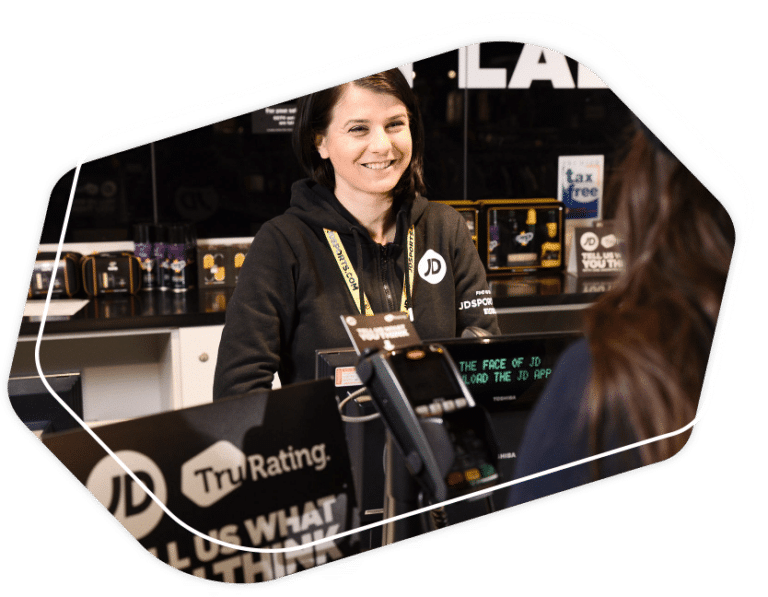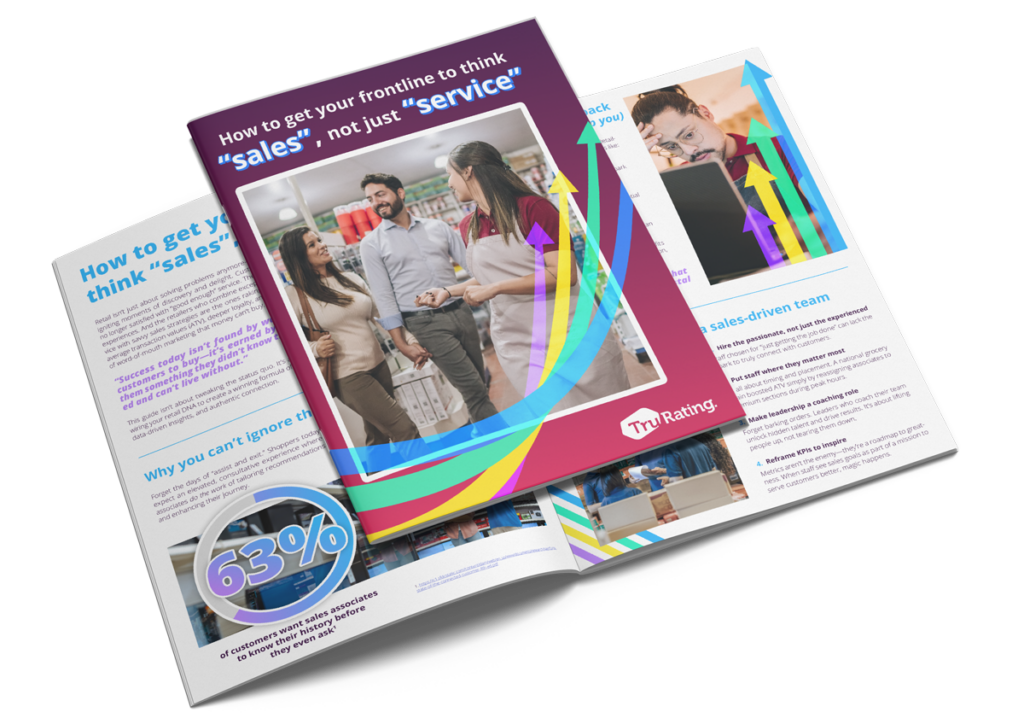The advantages and disadvantages of a competitive pricing strategy are under more scrutiny than ever. Prices are no longer static labels but dynamic signals of value, trust, and positioning. For retail leaders tasked with hitting same-store sales targets and delivering consistency across hundreds of locations, pricing decisions can determine whether your stores win traffic or watch it flow to competitors.
Recent headlines highlight the stakes. Walmart’s CEO Doug McMillon told the Financial Times that US tariffs were driving costs up week by week, forcing the world’s largest retailer to weigh raising prices even as shoppers turned to its stores for affordable goods. Meanwhile, data from the CNBC/NRF Retail Monitor showed retail sales spiking in this summer, as consumers accelerated purchases ahead of anticipated tariff hikes. Categories like groceries, clothing, and sporting goods saw noticeable lifts, evidence that shoppers are acutely attuned to pricing and willing to shift behavior in response.
Pricing as a signal of trust in uncertain times
To state the obvious, shoppers compare prices, and they do it constantly. They notice when your pricing strategies diverge from competitors, and they act with their wallets, switching to retailers offering sharper discounts or smarter promotional campaigns. In an era of inflationary pressure and economic uncertainty, even previously loyal customers are far more willing to trade down or cross-shop if they feel value isn’t being delivered.
This means that pricing isn’t just a lever for margin, it’s a signal of trust. If your business fails to keep pace with the value perception customers expect, you risk losing not just transactions, but long-term loyalty. In a market where shoppers can run a retail price comparison in seconds, failing to match perceived fairness can turn today’s customer into tomorrow’s competitor’s win. For retailers, especially those in complex, multi-store environments, the challenge lies in setting competitive prices and operationalising a retail pricing strategy that is responsive, consistent, and grounded in customer perception.
This article explores the advantages and disadvantages of a competitive pricing strategy. We’ll break down what competitive pricing is, how competition shapes decision-making, real-world examples of pricing strategies, and the trade-offs retailers must manage. We’ll also examine how to implement competitive pricing effectively, including the roles of retail competitor pricing analysis, price optimization retail, and dynamic pricing in retail. Finally, we’ll explain why store-level visibility, not just what customers pay, but how they perceive value, can turn competitive pricing from a defensive tactic into a growth driver.
What is a competitive pricing strategy?
A competitive pricing strategy sets product prices based primarily on the market conditions and what competitors charge. Rather than focusing only on cost-plus or value-based models, competitive pricing strategies use retail price comparison and competitor price analysis as the foundation for setting prices.
This approach ensures you remain aligned with consumer expectations in a crowded market. Customers routinely engage in retail price comparison, both online and in-store. Foot traffic and conversion can drop if your retail pricing strategy drifts too far above competitors. Competitive pricing focuses on positioning and setting retail prices that support your brand promise while safeguarding margins.
How competition affects a business’s pricing strategy
Competition exerts a direct influence on pricing strategies. For example:
- High competition – in saturated categories like groceries or apparel, even a 1–2% price gap can redirect customers. Competitor pricing insights for retailers become essential.
- Low competition – in categories with fewer substitutes or more differentiated products, retailers may enjoy more pricing power, relying on premium retail pricing models rather than constant discounting.
- Dynamic shifts – in volatile markets, like tariffs or inflationary spikes, competition forces quick pivots to dynamic pricing in retail, where prices adjust daily or even hourly.
Retail leaders must therefore treat competition not just as background noise but as an active force shaping margins, loyalty, and brand equity.
Competitive pricing strategy examples
Competitive pricing strategies come in several forms, each with different risks and rewards.
1. Penetration pricing
Penetration pricing sets prices lower than competitors to rapidly attract customers and gain market share. It’s often used for new product launches, seasonal categories, or when entering a highly competitive market. While it can quickly drive traffic and volume, you must manage the risk of eroding margins and ensure clear plans for transitioning to sustainable pricing strategies once awareness and loyalty are built.
2. Price matching
Price matching involves offering the same price as competitors on identical products to build customer trust and prevent defection. It’s especially common in electronics, appliances, and general merchandise where retail price comparison is easy for shoppers. This approach can reassure customers but also compress margins if applied too broadly, so retailers often pair it with selective promotional pricing retail tactics to keep the strategy profitable.
3. Psychological pricing
Psychological pricing uses small but powerful cues, such as pricing at $9.99 instead of $10, to make products feel more affordable and appealing. This approach plays on human perception rather than actual cost, often improving conversion rates without significant margin impact. It’s a low-cost tactic that reinforces value perception while supporting broader retail pricing strategy objectives.
4. Loss leader pricing
Loss leader pricing deliberately sets a few products below cost to attract foot traffic and boost basket size. Grocery chains often use this strategy, drawing customers in with discounted staples like milk or bread, knowing they’ll likely purchase higher-margin items during the same trip. While effective for driving store visits, you must monitor closely to ensure the strategy doesn’t cannibalize profit or train customers to only buy discounted items.
5. Premium pricing
Premium pricing sets products above the market average to signal quality, exclusivity, or strong brand positioning. This approach is common in categories like luxury fashion, cosmetics, or electronics, where shoppers associate higher prices with better value. Success depends on consistent retail price positioning, strong branding, and customer trust. For a premium pricing strategy execution is key, service levels, product availability, and in-store experience must justify the premium.
6. Monopolistic competitive pricing
Monopolistic competition occurs when many retailers sell broadly similar products but differentiate through brand, quality, or experience. In fashion, for example, a premium brand can charge more than fast-fashion rivals because customers perceive uniqueness or status value. The challenge lies in balancing differentiation with competitiveness, using a retail competitor pricing analysis to track not only direct rivals but also substitutes, while understanding value perception across stores and regions.
These examples show how diverse competitive pricing strategies can be. The choice depends on category dynamics, competitor landscape, and consumer expectations.
Advantages of a competitive pricing strategy
For retail operations leaders, the benefits of a competitive pricing strategy include:
1. Customer acquisition and retention
Staying aligned with market pricing makes it easier to win new shoppers and keep loyal customers from defecting.
2. Market responsiveness
Competitive pricing strategies allow rapid adaptation to external shifts—tariffs, inflation, or competitor promotions.
3. Transparency and trust
Shoppers see fairness in your pricing, particularly when reinforced with retail price comparison guarantees.
4. Support for retail pricing optimization
With strong competitor pricing insights for retailers, ops leaders can use data to fine-tune price optimization retail initiatives, aligning discount depth to actual demand.
Learn more about retail pricing optimization.
5. Conversion lift
Aligning with customer expectations at the point of purchase can directly improve conversion, a top KPI for store operations leaders.
Disadvantages of a competitive pricing strategy
Of course, competitive pricing strategies also bring risks:
1. Margin erosion
Relying too heavily on promotional pricing retail tactics can compress profitability, especially if competitors escalate price wars.
2. Lack of differentiation
Constant price matching may train shoppers to see you as interchangeable with rivals, eroding brand value.
3. Short-term wins, long-term risk
Chasing prices may distract from building loyalty drivers like service, product quality, or convenience.
4. Data complexity
Effective retail competitor pricing analysis requires robust tools, resources, and execution discipline.
5. Execution gaps
Inconsistent retail pricing tactics across stores can confuse customers and undermine brand trust.
For retail operations leaders, the disadvantages often emerge when competitive pricing is treated as the only lever, rather than part of a balanced retail pricing strategy.
How to implement a competitive pricing strategy
Implementing a competitive pricing strategy requires more than simply adjusting price tags. It’s a structured process that blends market intelligence, data-led decision making, and real-time customer feedback. Done right, it ensures that your pricing isn’t just competitive, it’s profitable, consistent, and trusted by shoppers.
Step 1: Market research and benchmarking
Start by gathering competitor pricing insights for retailers. This involves studying rivals’ promotions, monitoring retail price comparison trends, and conducting regular competitor price analysis across key categories. The goal is to establish a benchmark that reflects not just price points, but also how competitors use retail discount strategy, seasonal promotions, and retail pricing tactics to influence consumer behavior.
Step 2: Define the right retail pricing models
After benchmarking, you must decide which competitive pricing strategies best align with their category dynamics and brand promise. The models outlined in the Competitive Pricing Strategy Examples section, such as penetration pricing, premium pricing, loss leader strategies, or monopolistic competitive pricing, provide the foundation for execution.
For instance:
- Penetration pricing may suit new store formats or seasonal launches.
- Price matching can reinforce fairness and transparency in categories where shoppers frequently engage in retail price comparison.
- Premium pricing works in differentiated categories where retail price positioning is linked more to quality than cost.
- Psychological pricing can add subtle cues of affordability without significant margin impact.
Selecting the appropriate pricing model ensures that decisions are made within a comprehensive strategy tailored to your market, rather than in isolation. Additionally, it provides a consistent framework for future price optimization both in retail and relative to competitors.
Step 3: Pilot, test, and measure
Avoid chain-wide rollouts without proof. Pilot new pricing strategies in select stores, then measure conversion, ATV, UPT and customer feedback. Layer in retail competitor pricing analysis to see how shifts compare against market rivals. This prevents over-discounting and ensures pricing adjustments deliver a measurable benefit before scaling.
Step 4: Operationalize with coaching and consistency
Even the smartest pricing strategies fail if not consistently executed. Build store playbooks for frontline teams, provide regional leaders with coaching signals, and monitor execution with retail price positioning dashboards. Embedding retail competitor pricing optimization into this phase ensures your teams have both the tools and the guardrails to act confidently.
Step 5: Measure value perception and optimize
Finally, validate whether your strategy lands with customers. TruRating enables retailers to capture feedback at checkout, showing whether shoppers perceive prices as fair and competitive. This closes the loop between strategy and execution and helps you prove that pricing changes are driving real performance, not just short-term sales spikes.
Balancing price and perception
The real challenge of a competitive pricing strategy isn’t simply setting the right number at head office, it’s making sure that price resonates in every store, region, and customer interaction. What succeeds in one location can easily underperform in another, and without store-level visibility, retailers risk applying broad strategies that overlook local nuances.
This is where TruRating delivers a decisive advantage. By capturing customer feedback directly at the point of sale, TruRating provides real-time, store-specific insight into how shoppers actually perceive pricing. Unlike traditional post-purchase surveys that take weeks or months to surface trends, TruRating’s high-volume, in-the-moment data stream enables retailers to act on pricing decisions within hours. In today’s climate of inflationary pressure and unpredictable demand, that speed is critical. Pricing can’t rely on stale insights; it needs to be responsive to the market as it shifts.
The combination of speed and granularity transforms pricing from a static head-office decision into a dynamic performance lever. It lets you quickly see whether a retail discount strategy boosts conversion in some stores but erodes margins in others, or whether retail price positioning is consistently aligned with customer expectations across regions.
The result is a smarter, more localised approach to competitive pricing, one that balances fairness, profitability, and customer perception. With TruRating, you’re not just reacting to market shifts but staying ahead of them, turning real-time insight into consistent execution and a measurable competitive edge.
Looking to elevate your competitive pricing strategy? Learn more about our customer feedback platform or schedule a demo today.












